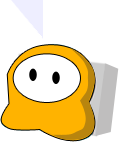Delve into Gugidong
The district Gugidong of in Seoul is a subburb in South Korea a little north of Seoul, the country's capital town.
If you need a hotel, we compiled a list of available hotels close to the map centre further down the page.
While being here, you might want to pay a visit to some of the following locations: Seoul, Jangheung, Gwangtan, Gwangjeok and Beobwon. To further explore this place, just scroll down and browse the available info.
Local weather forecast
Todays Local Weather Conditions & Forecast: 12°C / 54 °F
| Morning Temperature | 8°C / 46 °F |
| Evening Temperature | 12°C / 53 °F |
| Night Temperature | 11°C / 51 °F |
| Chance of rainfall | 0% |
| Air Humidity | 59% |
| Air Pressure | 1020 hPa |
| Wind Speed | Moderate breeze with 9 km/h (6 mph) from East |
| Cloud Conditions | Scattered clouds, covering 27% of sky |
| General Conditions | Light rain |
Friday, 22nd of November 2024
8°C (46 °F)
6°C (44 °F)
Sky is clear, gentle breeze, clear sky.
Saturday, 23rd of November 2024
9°C (48 °F)
8°C (46 °F)
Sky is clear, calm, clear sky.
Sunday, 24th of November 2024
10°C (49 °F)
9°C (48 °F)
Sky is clear, calm, clear sky.
Hotels and Places to Stay
Grand Hilton Seoul
ORAKAI INSADONG SUITES
The Westin Chosun Seoul
Lotte Hotel Seoul
Chiwoonjung Hanok Boutique Hotel
RAMADA HOTEL AND SUITES SEOUL
Four Seasons Hotel Seoul
LOTTE HOTEL L7 MYEONGDONG
Shilla Stay Seodaemun
Lotte City Hotel Myeongdong
Videos from this area
These are videos related to the place based on their proximity to this place.
북한산 족두리봉 등반 실황(HD) - Mount Jokduri Bukhansan Korea(HD) psy's country
This Video is a Climb Mount Jokduri Bukhansan Full Video(2012) This Video is real Climing Scene. Bukhansan is one of Korea National Park. Mount Jokduri is one of Bukhansan. Mount Jokduri...
[Spicy noodle baby] How to use chopsticks
She can use chopsticks well. And spaghetti is not spicy. Compare with below: http://www.youtube.com/watch?v=tBt8UkyaCfQ.
아이패드 iPad 잡지 론리플래닛 매거진 코리아 프리뷰
Lonely Planet Magazine Korea is the 10th international edition of Lonely Planet Magazine published by Ahn-graphics Ltd. in Korea. Lonely Planet Magazine is new glossy travel magazine for...
Videos provided by Youtube are under the copyright of their owners.
Attractions and noteworthy things
Distances are based on the centre of the city/town and sightseeing location. This list contains brief abstracts about monuments, holiday activities, national parcs, museums, organisations and more from the area as well as interesting facts about the region itself. Where available, you'll find the corresponding homepage. Otherwise the related wikipedia article.
Gyeongbokgung
Gyeongbokgung, also known as Gyeongbokgung Palace or Gyeongbok Palace -- is a royal palace located in northern Seoul, South Korea. First constructed in 1395, later burned and abandoned for almost three centuries, and then reconstructed in 1867, it was the main and largest palace of the Five Grand Palaces built by the Joseon Dynasty. The name means "Palace" [Gung Gung] "Greatly Blessed by Heaven" [Gyeongbok Gyeongbok].
Blue House
The Blue House (Korean: 청와대 Cheong Wa Dae) is the executive office and official residence of the South Korean head of state, the President of the Republic of Korea and located in the capital city of Seoul. The Korean name literally translates to "pavilion of blue tiles. " The Blue House is in fact a complex of buildings, built largely in the traditional Korean architectural style with some modern elements.
Hongje Station
Hongje Station is a rapid transit station on Seoul Subway Line 3.
Nokbeon Station
Nokbeon Station is a station on the Seoul Subway Line 3.
Gupabal Station
Gupabal Station is a station on the Seoul Subway Line 3. Some Line 3 trains only offer service up to this station, although it is not the technical end of Line 3 (Jichuk is the actual end).
Muakjae Station
Muakjae Station is a station on Seoul Subway Line 3.
Japanese General Government Building, Seoul
The Government-General Building (1916-26) -- often referred to outside of Korea as the "Seoul Capitol" -- was the chief administrative building in Keijo (Seoul) during Colonial Korea and the seat of the Governor-General of Korea from 1926 until 1946. After independence the neoclassical building was the scene of numerous important events for the Republic of Korea (South Korea), housing first the National Assembly, and later the National Museum of Korea.
Eunpyeong District
Eunpyeong District (Eunpyeong-gu) is one of the 25 gu which make up the city of Seoul, South Korea. The mayor of this district is Uyeong KIM (김우영) since July 2010.
Yeonsinnae Station
Yeonsinnae Station is a station on the Seoul Subway Line 3 and Seoul Subway Line 6, on the northwest side of Seoul in the urban area of Eunpyeong-gu. Although Yeonsinnae Station had a corresponding hanja name (延新內), this name was deemed incorrect and dropped in May 2001. The station is located on the one-way Eungam Loop of Line 6, and therefore the trains from the Line 6 Yeonsinnae station only run in the direction of Bonghwasan Station.
Gansong Art Museum
Gansong Art Museum is the first modern private museum of Korea and was founded by Jeon Hyeongpil (전형필 全鎣弼) in 1938. The museum was named after the pen name of the founder, Gansong (간송 澗松). The aim of the foundation was to prevent Japanese removal of Korean cultural properties, during the Japanese occupation. At times, numerous Korean cultural properties were taken to Japan, such as Goryeo porcelains, statues of Buddha made in Silla kingdom, documents and books made in Joseon dynasty.
Bulgwang Station
Bulgwang Station is a subway station located in Eunpyeong-gu, which is a district in Seoul, South Korea. This station is on the Seoul Subway Line 3 and Line 6. The station is located on the one-way Eungam Loop of Line 6, and therefore the trains from the Line 6 Bulgwang station only run in the direction of Dokbawi Station.
Gyeongbokgung Station
Gyeongbokgung station is a subway station on the Seoul Subway Line 3. Gyeongbokgung station is the subway station nearest to the Gyeongbok Palace or (Gyeongbokgung). The station is also near the Central Government Complex and the National Police Agency of South Korea. There are other administrative buildings in the neighborhood.
Han Sang Soo Embroidery Museum
The Han Sang Soo Embroidery Museum is an art museum specializing in Korean embroidery located in Gahoe-dong, Jongno-gu, central of Seoul, South Korea. It was established by Han Sang Soo (한상수, born c. 1934) who holds a title as a jasujang (자수장, embroidery artisan) of the 80th Important Intangible Cultural Property designated by the Cultural Heritage Administration of South Korea.
Tibet Museum (South Korea)
The Tibet Museum is a museum dedicated to Tibetan culture in Sogyeok-dong, Jongno-gu, Seoul, South Korea.
Total Museum of Contemporary Art
The Total Museum of Contemporary Art (TMCA) is a non-profit museum in Seoul, South Korea. The museum, previously named the Total Outdoor Museum, was the first private art institute in South Korea.
Whanki Museum
The Whanki Museum is a private art museum located in Jongno-gu, in central Seoul, South Korea. It was established by the Whanki Foundation mainly to exhibit and commemorate the art world of Whanki Kim, a representative abstract painter in Korean art history. The museum was first planned in 1988 in Buam-dong, located close to Seongbuk-dong, Seongbuk-gu, which Kim Whanki had many attachments to. The atmosphere and environment of the two places have much in common.
World Jewellery Museum
The World Jewellery Museum is a museum in Seoul, South Korea.
Bukchon Hanok Village
Bukchon Hanok Village is a Korean traditional village with a long history located between Gyeongbok Palace, Changdeok Palace and Jongmyo Royal Shrine. The traditional village is composed of lots of alleys, hanok and is preserved to show a 600-year-old urban environment. Now it is used as a traditional culture center and hanok restaurant, allowing visitors to experience the atmosphere of the Joseon Dynasty.
Jeongdok Public Library
Jeongdok Public Library is a library in Seoul, South Korea. It is located in Hwa-dong, Jongno-gu, on Bukchongil. On the campus of Jeongdok Public Library is Jongchinbu, Seoul Tangible Cultural Property number 9. Jongchinbu was constructed in 1433 and is one of three remaining Joseon Dynasty government buildings. The rest were destroyed in the Japanese invasions, occupation, or the Korean War. Until February 1976, Kyunggi High School was located in the campus.
Yeokchon Station
Yeokchon Station is a railway station on Line 6 of the Seoul Subway. This station is part of a one-way section of Line 6 known as the Eungam Loop.
Dokbawi Station
Dokbawi Station is a railway station on Line 6 of the Seoul Subway. This station is part of a one-way section of Line 6 known as the Eungam Loop. It is located in a relatively low-density area, and only has one exit.
Gusan Station
Gusan Station is a railway station on Line 6 of the Seoul Subway located at Gusan-dong, Eunpyeong-gu, Seoul. This station is part of a one-way section of Line 6 known as the Eungam Loop.
Baengnyeonsan
Baengnyeonsan is a mountain in Seoul, South Korea, lying on the border between Eunpyeong-gu and Seodaemun-gu. It has an elevation of 216 m . The name "Baengnyeonsan" means "White Lotus Mountain."
Sukjeongmun
Sukjeongmun (Hangul 숙정문, Hanja 肅靖門; also known as North Gate) is one of the The Eight Gates of Seoul in the Fortress Wall of Seoul, South Korea, which surrounded the city in the Joseon Dynasty. The gate is also known as Bukdaemun (북대문, “North Big Gate”).
Changuimun
Changuimun (Hangul 창의문, Hanja 彰義門; also known as Northwest Gate) is one of the Eight Gates of Seoul in the Fortress Wall of Seoul, South Korea, which surrounded the city in the Joseon Dynasty. The gate is also known as Buksosomun (북소문, “North Small Gate”), and Jahamun (자하문).


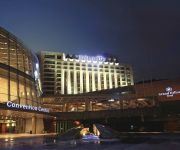
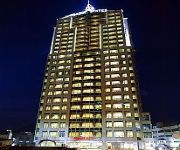
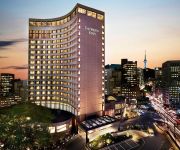
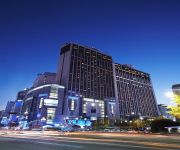

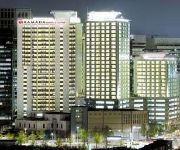


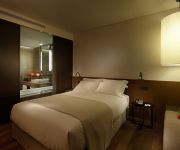
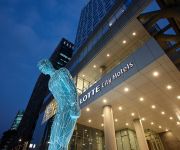



!['[Spicy noodle baby] How to use chopsticks' preview picture of video '[Spicy noodle baby] How to use chopsticks'](https://img.youtube.com/vi/__2hzQYS7ug/mqdefault.jpg)







